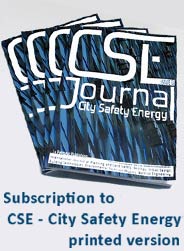Durability and mechanical properties of nanocomposite fiber reinforced concrete
Abstract
Keywords
Read the full text
Download PDFReferences
ASTM C 88-05, Standard Test Method for Soundness of Aggregates by Use of Sodium Sulfate or Magnesium Sulfate, 2013.
ASTM C 642-13, Standard Test Method for Density, Absorption, and Voids in Hardened Concrete, 2013.
ASTM C 1557-03, Standard Test Method for Tensile Strength and Young's Modulus of Fibers, 2013.
Bartos, P. “Review paper: bond in fibre reinforced cements and concretes,” International Journal of Cement composites and Lightweight concrete, no. 3, 3 (1981): 159-177.
Jianming, G., Zhenxin, Y., Luguang, S., Tingxiu, W. and W. Sun. “Durability of concrete exposed to sulfate attack under flexural loading and drying–wetting cycles,” Construction and Building Materials, no. 39, (2013): 33-38.
Kakooei, S., Hazizan, Md A., Morteza, J. and J. Rouhi. “The effects of polypropylene fibers on the properties of reinforced concrete structures,” Construction and Building Materials, no. 27, (2012): 73-77.
Kim, J-HJ, Park, C-G, Lee, S-W, Lee, S-W and J-P Won. “Effects of the geometry of recycled PET fiber reinforcement on shrinkage cracking of cement-based composites,” Composites Part B: Engineering, no. 39, 3 (2008): 442-450.
Neville, A. “The confused world of sulfate attack on concrete,” Cement and Concrete Research, no. 34, (2004): 1275-1296.
Richardson, A.E., Coventry, K.A. and S. Wilkinson. “Freeze/thaw durability of concrete with synthetic fibre additions,” Cold Regions Science and Technology, no. 83-84, (2012): 49-56.
RILEM TC 116-PCD. “Permeability of concrete as a criterion of its durability. Concrete durability— an approach towards performance testing,” Materials and Structures, no. 32, (1999): 163-173.
Singh, S., Shukla, A. and R. Brown. “Pullout behaviour of polypropylene fibers from cementitious matrix,” Cement and Concrete Research, no. 34, (2004): 1919–1925.
UNI EN 206-1, Concrete: Specification, performance, production and conformity, 2014.
UNI 7087, Concrete: Determination of the resistance to the degrade due to freeze-thaw cycles, 2002.
UNI 9526, Concrete: Determination of water absorption by capillarity, 1989.
UNI EN 12350-2, Testing fresh concrete. Slump-test, 2009.
UNI EN 12390-3, Testing hardened concrete. Compressive strength of test specimens, 2009.
UNI EN 12390-5, Testing hardened concrete. Flexural strength of test specimens, 2009.
DOI: http://dx.doi.org/10.12896/cse20140020031
Refbacks
- There are currently no refbacks.

This work is licensed under a Creative Commons Attribution 3.0 License.
CSE Journal - City Safety Energy is a semiannual journal (Two ISSUES per Year) published by Le Penseur in Brienza (PZ) - Italy | ISSN print edition 2283-8767 | ISSN online edition 2284-3418 - Journal registerd at the Court of Potenza (Italy) n. 219/2014


